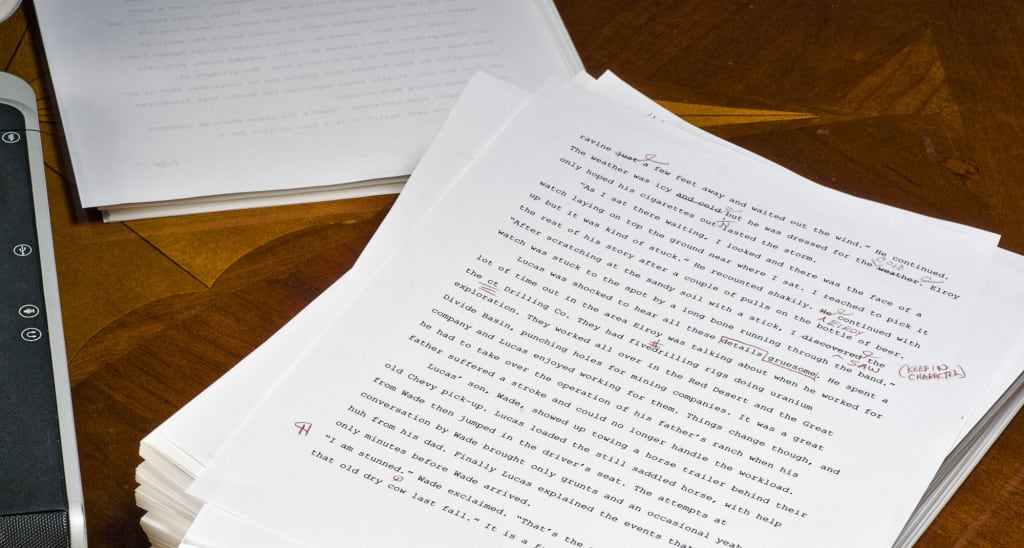Avoid Rejection
Learn to format your manuscript

Formatting your document, whether it is a blog, manuscript for a periodical, a screenplay, or a novel, plays a major role in the success or failure of your piece. It greatly improves your chances of catching the attention of a publisher and having a successful publishing experience. Even if you self-publish, unless you convert your manuscript yourself, many self-publishing companies now also require that you abide by basic formatting styles so they can convert your book to the proper file format.
Editors frequently bemoan the unprofessionalism of the manuscripts they receive – from the documents being submitted on fancy stationary and/or colored paper, to unreadable fonts, colored ink, lack of pagination, and various other sundry issues. If you send a poorly formatted document to an editor, you will likely have to pay more for their services. Why pay someone else for basic formatting that you can easily do yourself?
If you are submitting to a traditional publisher, it is always recommended to contact them and ask for a copy of their submission specifications. Most publishers have these available on their websites and they are very specific. Your manuscript will be rejected without anyone even reading it if you do not follow these guidelines. There are some very basic guidelines that most organizations will require which are a good place to start.
- Use a 1 inch margin on all sides.
- Use a title page. On this title page, align left and single space in the header near the top of the page your contact information including your legal name, phone number and email address. This only goes on the title page.
- About halfway down the page, center the title of your manuscript typed in caps.
- Do not number the title page. Begin numbering with the first page of the text.
- Use a header on each subsequent page which includes your name, title of your work (in all caps) and page number. Again, do not put contact info on each page.
- Start each chapter on a new, numbered page, one-third of the way down.
- Chapter number and chapter title should be in all caps separated by two hyphens. Example: CHAPTER TWO -- JOE MEETS SALLY
- The body of chapter should start four to six lines below the chapter title.
- Indent five spaces (1/2 inch) for each new paragraph.
- Double space entire text with no extra lines between paragraphs.
- Use standard font, 12 point (Times, New Roman, Arial or Courier).
- Do not right align the text.
- Use italics for italicized words as opposed to underlying (that's old school).
- Try not to use "two spaces" between sentences. For those of us who learned to type on a typewriter, this is a hard habit to break. It is always good to use the ‘Replace’ feature to check for this, and it is the easiest way to make sure you don’t miss any instances of this in your manuscript.
- Use 20-lb paper, white paper.
Following the above basic rules can greatly enhance your chances of having an agent or editor actually looking at your manuscript. You want to maintain a level of professionalism and not give the publisher any excuse to "round file" your manuscript (throw it in a trash can), or have any type of unfavorable response to your submission.
In addition, to the above basic guidelines, different markets require different formatting. Many scientific and academic manuscripts require the use of the APA formatting style which has been the standard since the 1920's when it was developed. Scientific and academic publishing formatting standards can be complicated and frustrating if you are not used to them. APA formatting will be covered more in depth in a subsequent article.
Screenwriting and plays require yet another different set of formatting and will also be covered more in depth in a subsequent article.
- Julie O'Hara 2023
Thank you for reading my poem or article. Please feel free to subscribe to see more content and if you are moved to, please consider tipping. In addition, my books can be found at https: Julie O'Hara Bookshop
About the Creator
Julie O'Hara - Author, Poet and Spiritual Warrior
Thank you for reading my work. Feel free to contact me with your thoughts or if you want to chat. [email protected]






Comments
There are no comments for this story
Be the first to respond and start the conversation.